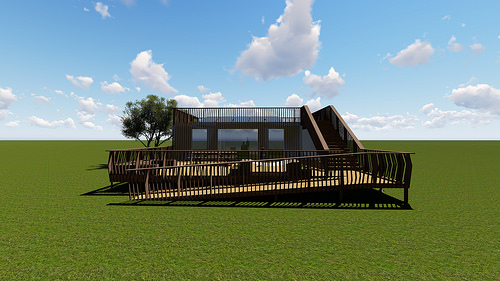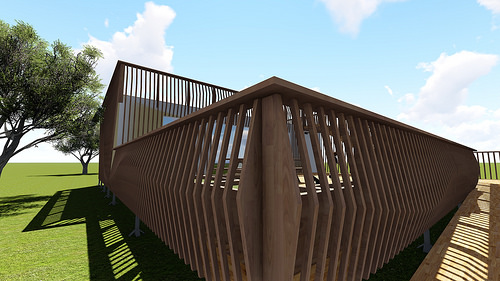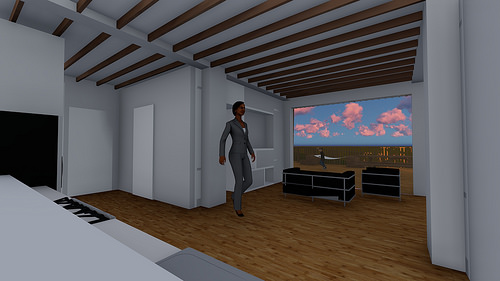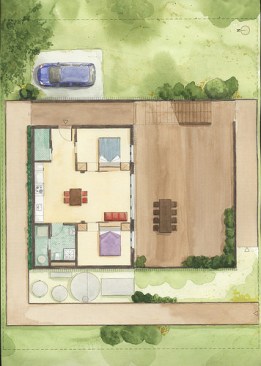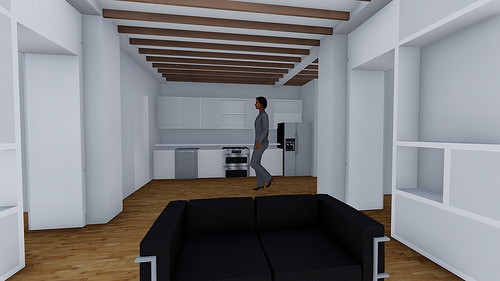Students from the University of California, Berkeley, and the University of Denver have teamed up on a sustainable home design to support Richmond, Calif.’s, transition from suburban to urban living. The transit- and community-oriented concept, RISE (“Residential, Inviting, Stackable, and Efficient), will debut at this year’s Solar Decathlon as a single-family unit, although the prototype accommodates up to three stories with five units total.
Courtesy DOE/UCB/DU
The multifamily version of the unit is designed to be a practical and efficient solution to the Bay Area’s tough housing challenge—the perfect storm of a growing population, sky-high cost of living, and shortage of undeveloped land.
Designed for middle- to low-income families, RISE, which the project team calls “a real-life [residence] addressing real-life challenges,” is intended to be affordable for a first-time home buyer. Its scalable, stackable design meets all requirements of Richmond’s building code—recently updated to promote higher-density living—and can be fitted to a long, narrow infill lot. One, three, or five units can be constructed on-site without specialized labor, and a post-and-beam structure simplifies vertical loading.
RISE units are flexible, with walls that can be moved along a track to expand or reduce bedroom and living room spaces; foldable furniture; and modular cabinetry. Passive systems allow for net-zero energy consumption, with heat and water reuse whenever possible. RISE units also include kitchen counters and tile made from recycled ceramic, as well as nontoxic sheep’s wool insulation.
The crafted wood exterior of RISE’s south, east, and west façades forms a distinctive wave pattern, while the north façade’s moss wall helps clean the air. The entire complex steps back to maximize roof spaces, and large stairwells promote community interaction.
After the competition, the unit will be donated to the Richmond Community Foundation and sold to a first-time home buyer through a housing renovation program.
